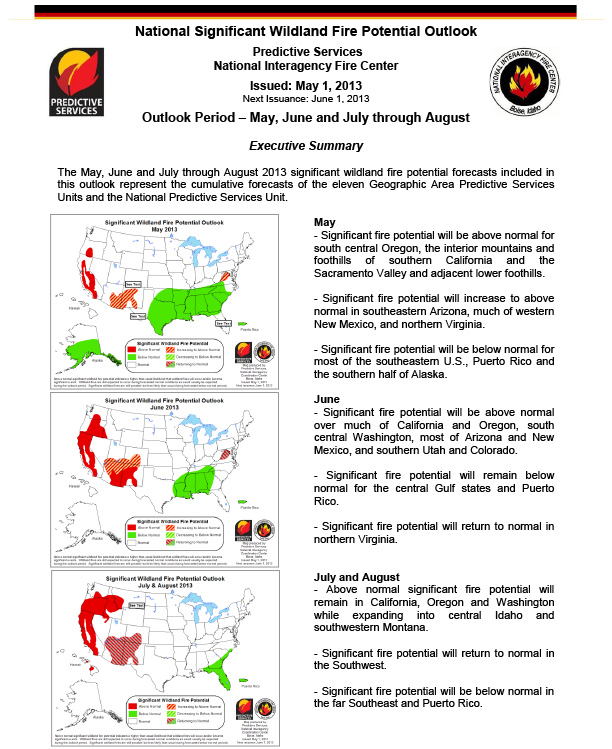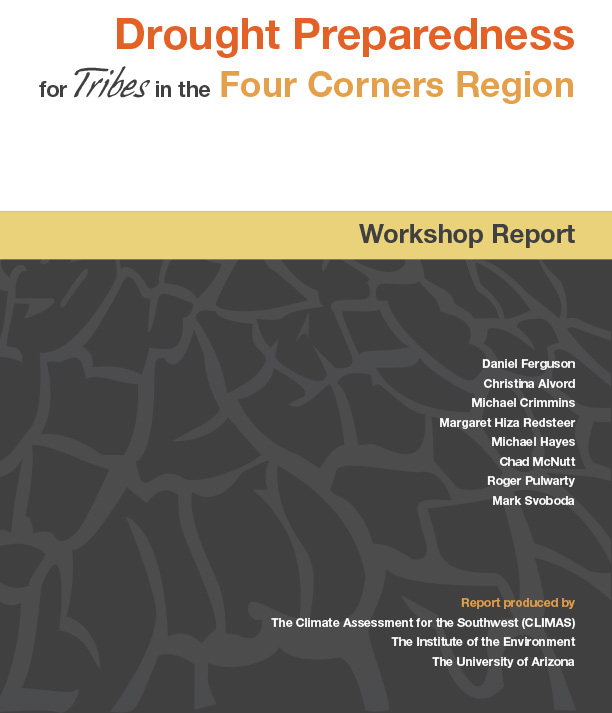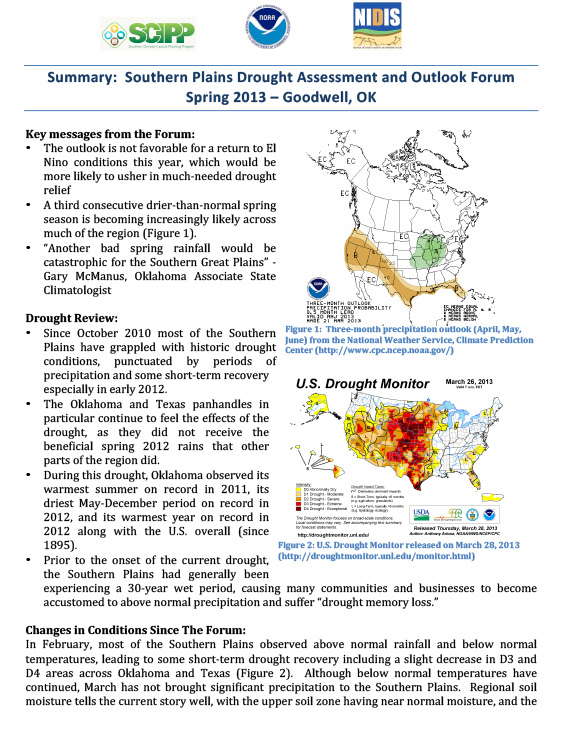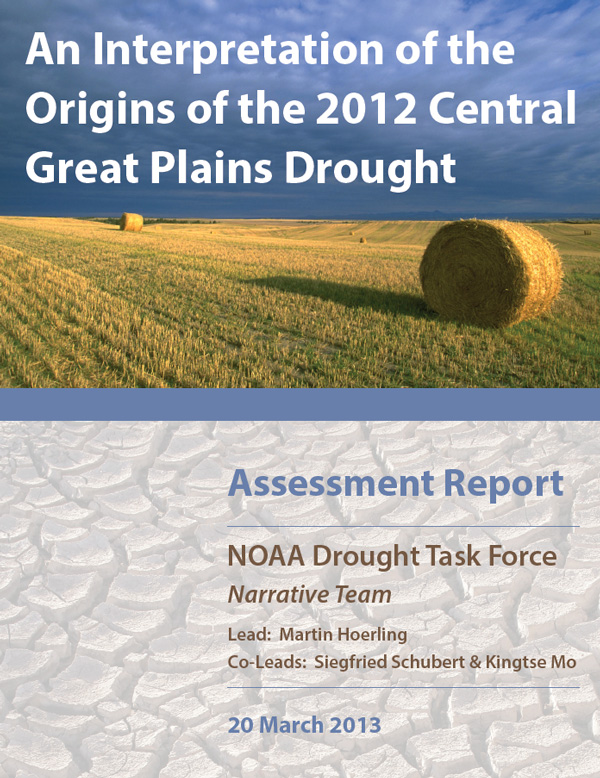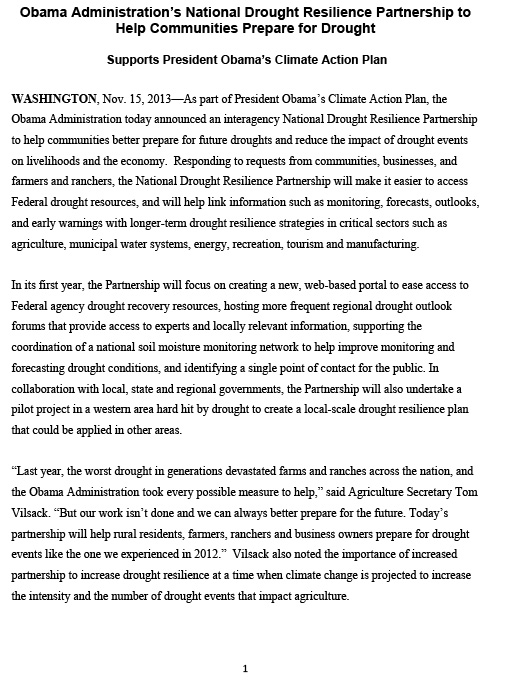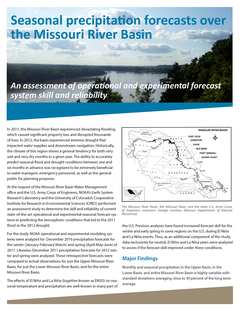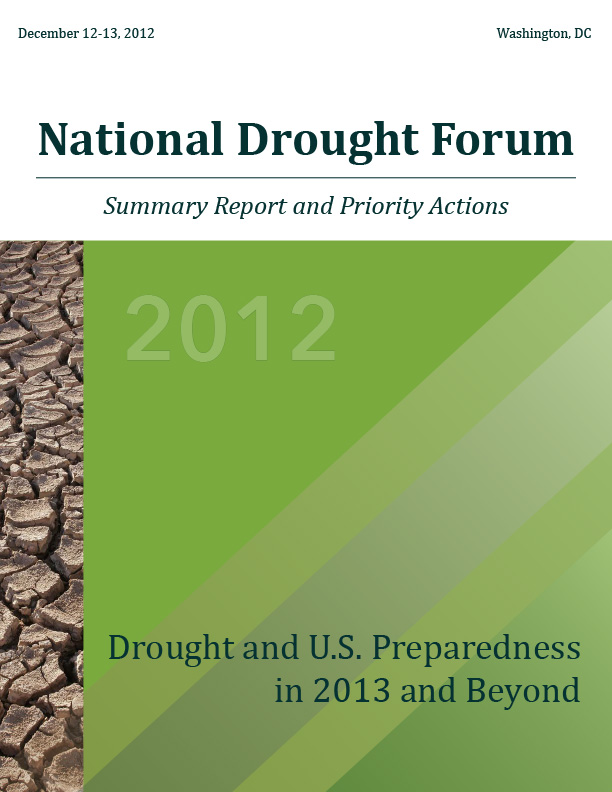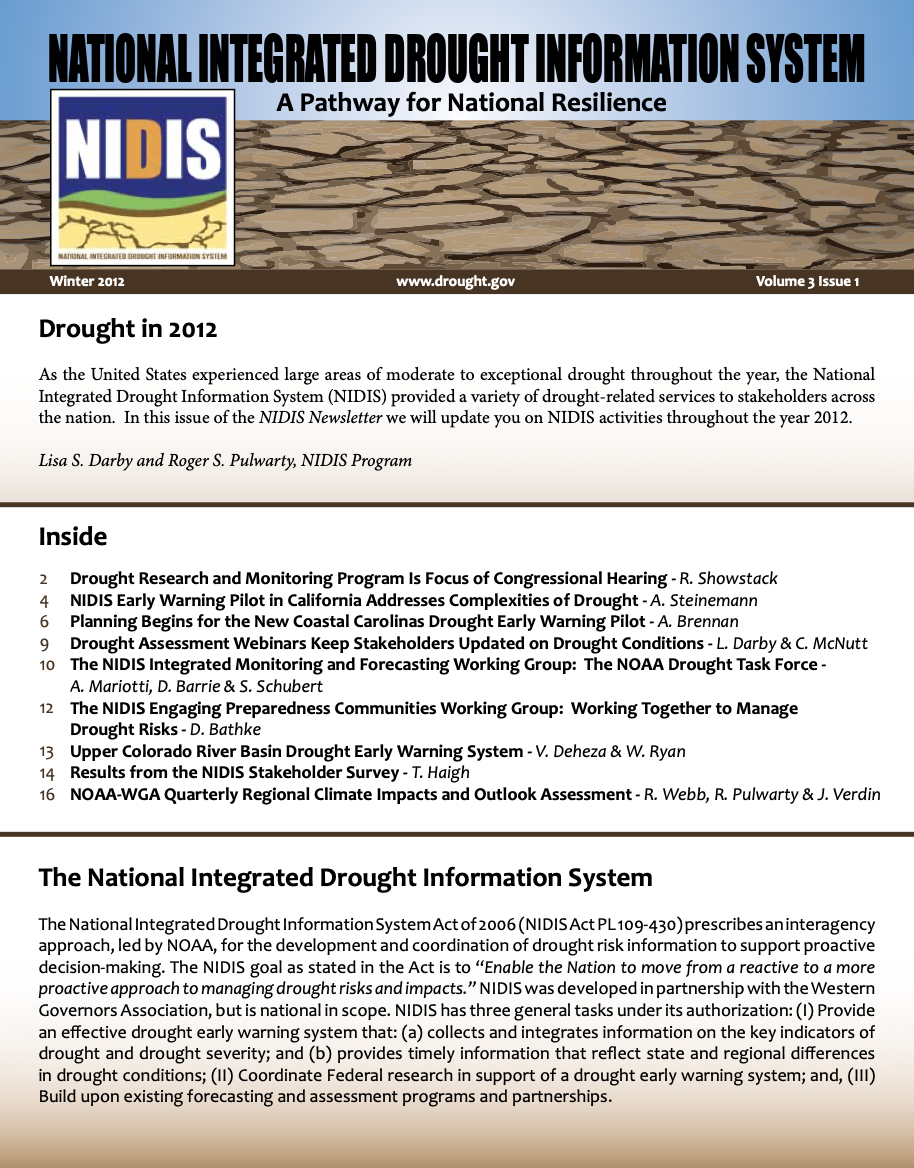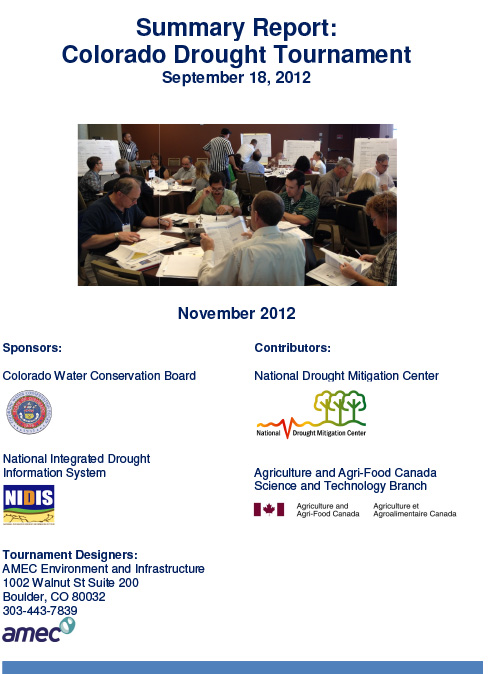Official National Significant Wildland Fire Potential Outlook May 2013.
Report on a workshop that took place April 8-9, 2010 in Flagstaff, Arizona between officials from the Hualapai, Zuni, Hopi, Navajo, Tohono O’odham and Southern Ute Tribes, together with NIDIS, NOAA, Climate Assessment for the Southwest (CLIMAS), Northern Arizona University, University of Arizona, Western Water Assessment, Desert Research Institute, Indigenous Waters Network, Flagstaff Science Center, USGS, National Drought Mitigation Center, Bureau of Reclamation and the Western Regional Climate Center.
This report describes the morphology of the 2012 summer U.S. Central Great Plains drought, placing the event into a historical context, and providing a diagnosis of its proximate and underlying causes.
This work was performed as part of the NOAA Drought Task Force I organized by the NOAA Modeling, Analysis, Predictions, and Projections Program (MAPP) in partnership with the National Integrated Drought Information System (NIDIS).
Provided at the Building Drought Early Warning Capacity Workshop in Bozeman, Montana March 17-18, 2015.
An summary of an assessment of operational and experimental forecast system skill and reliability in the Missouri River Basin.
On December 12-13, 2012, the National Drought Forum was held at the Hall of States in Washington, D.C. The Forum was planned and coordinated by the National Integrated Drought Information System (NIDIS) Program Office, a part of the National Oceanic and Atmospheric Administration. The Forum was co-sponsored by the following agencies and organizations:
Weekly drought update for 2012 drought conditions. Drought conditions, forecasts, outlooks, impacts, and the impact of climate change.
Dry Times Volume 3 Issue 1
Prior to becoming a bi-weekly email newsletter, “Dry Times,” the NIDIS newsletter, appeared twice a year in the spring and fall.
Overview of the Colorado Water Conservation Board (CWCB) and National Integrated Drought Information System (NIDIS) held on September 18, 2012. Includes description of the event, feedback, and recommendations for the future.


